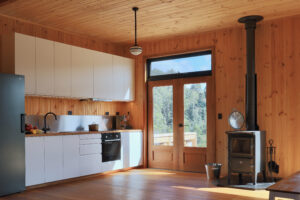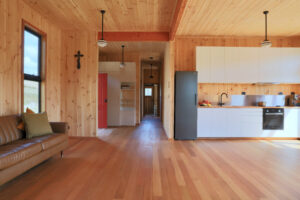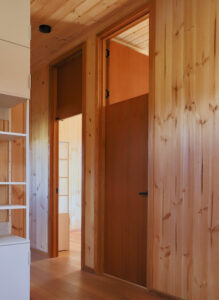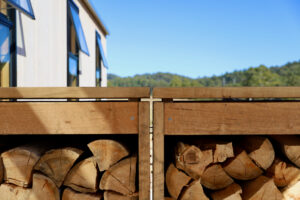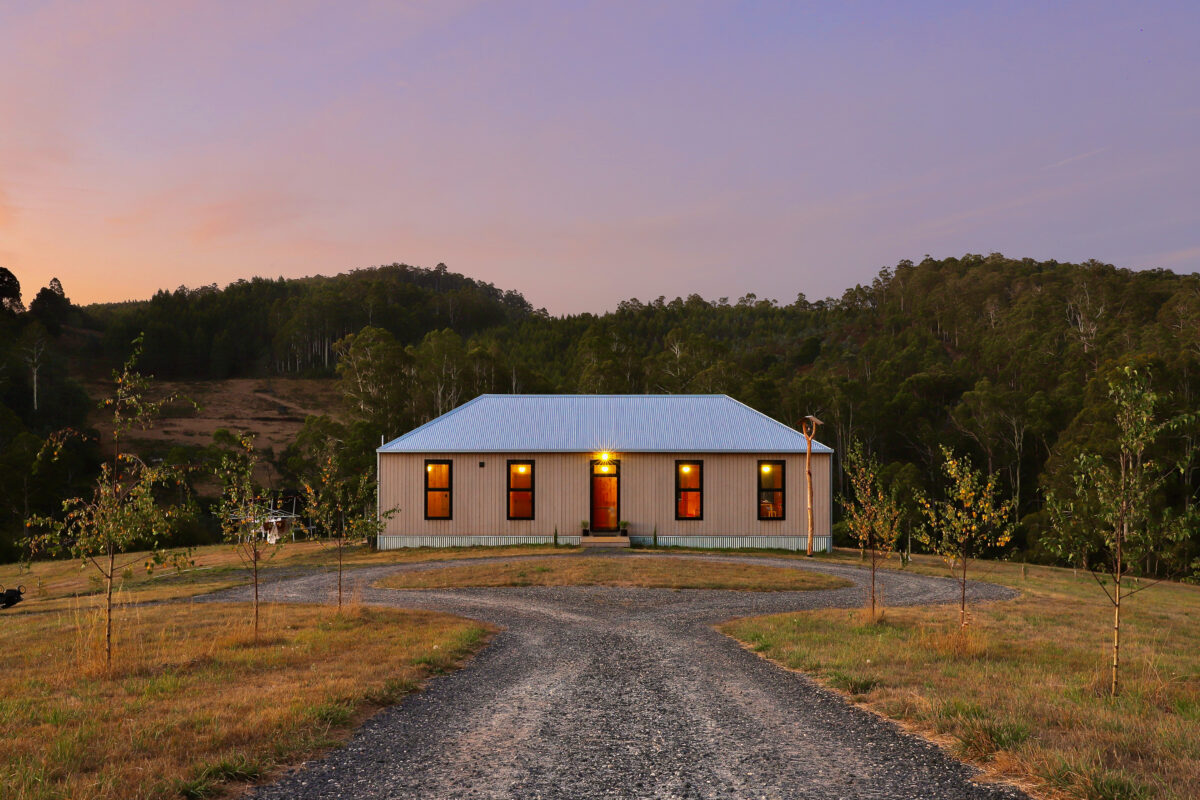Inspired by Georgian architecture famously embellishing Tasmanian countryside and compelled by the pressing need for solutions to the housing crisis, this contemporary-traditional cottage was conceived.
Named simply the “Tasmanian Homestead,” the building carries on the island’s heritage architecture by its hip roof and symmetrical front facade, with four vertical windows and panel door completed with Italian made brass knob and knocker, acquired from a local hardware shop somewhere in the back streets of Venice, a subtle nod to Ruskin.
A proof of concept for easy construction and replicability, the 120 square metre (1300 sqft), three bedroom, two bathroom house was built in just six months by a single inexperienced owner-builder, entirely unassisted (with the exception of a licensed plumber and electrician), with a meagre total budget of AUD $150,000 – about one third of the cheapest equivalent structures.
Yet upon entry, this strict economy is not at all obvious: three metre (10 ft) high ceilings expand the space and large windows flood each room with natural light. Hardwood floors, carefully curated hardware, fixtures and minimalist furniture and appliances lend the interior feeling of unexpected luxury.
To avoid complicated and expensive HVAC solutions, even heat distribution and ample ventilation is enabled and controlled by unique internal door design: a floor-to-ceiling split leaf doors, with the upper openable leaf replacing the usual header wall, that would normally block the passage of air. The solution costs no more than a regular door to build, improves comfort and creates an additional sense of spaciousness in the dwelling.
Paints, chemical treatments and plastics are almost entirely absent. The house stands on steel posts in concrete footings. The frame and lining are Tasmanian plantation timber. Bathroom floors are genuine natural linoleum. Cladding panels are of sawdust, solidified under heat and pressure using its own natural resins. Roof and subfloor enclosure is corrugated steel. Insulation is recycled glass with vegetable waste binder. Decks and outdoor furniture are from rough-sawn local hardwood. Window and door frames are easily recyclable aluminium.
Where required, surfaces are treated with plant-based oils, but most are left unfinished, utilising inherent material properties for their own protection and their natural look to create harmonies and contrasts.
The design relies not on excessive layers of synthetic membranes and tapes, but rather on careful junction detailing to exclude drafts, vermin and wildfire embers. The building envelope is also highly vapour permeable, preventing condensation and mould.
This environmentally friendly, character home was economical and quick to build, while elevating the aesthetic qualities of its surroundings: according to the locals “the house looks like it’s always been there.”
Architectural plans for the Tasmanian Homestead have been released as open source into the public domain, to support self-built low cost housing and have been downloaded by almost five thousand people within days of publication.

